Lipedema
What is lipedema and how it can be treated
Lipedema may affect up to 11% of women (1 in 9 women suffer) and in a smaller percentage men. It happens when fat is distributed in an irregular way under the skin, usually in the buttocks and legs. Although it begins as a cosmetic concern, it can eventually cause many significant issues like pain and other problems. Lipedema usually is mistaken as other conditions like regular obesity or lymphedema.
Symptoms of Lipedema
The typical symptoms of lipedema (or lipoedema) are a large lower half and column-like legs, which are often tender and bruise easily. For example, the top half of your body may be a size 8, but the bottom half may be a size 16. As the condition progresses, fat continues to build up, and your lower body grows heavier. The lipedemic fat will eventually be collected in other areas like the abdomen and the arms.
Over time, fat cells block the vessels of your lymphatic system, which normally helps balance body fluid levels and protect against infection. This blockage prevents the proper drainage of lymph fluid, leading to a buildup of fluid called lymphedema. Many times the two conditions are found together and make the condition and symptoms even worse.
If not treated, lymphedema can lead to problems such as infections, delayed wound healing, development of scar-like tissue called fibrosis, and hardened skin in the legs. Unlike obesity, lipedema targets legs, thighs and sometimes arms. Unlike lymphedema, lipedema doesn’t show in the foot (feet and ankles) but the upper legs and it affects both legs.
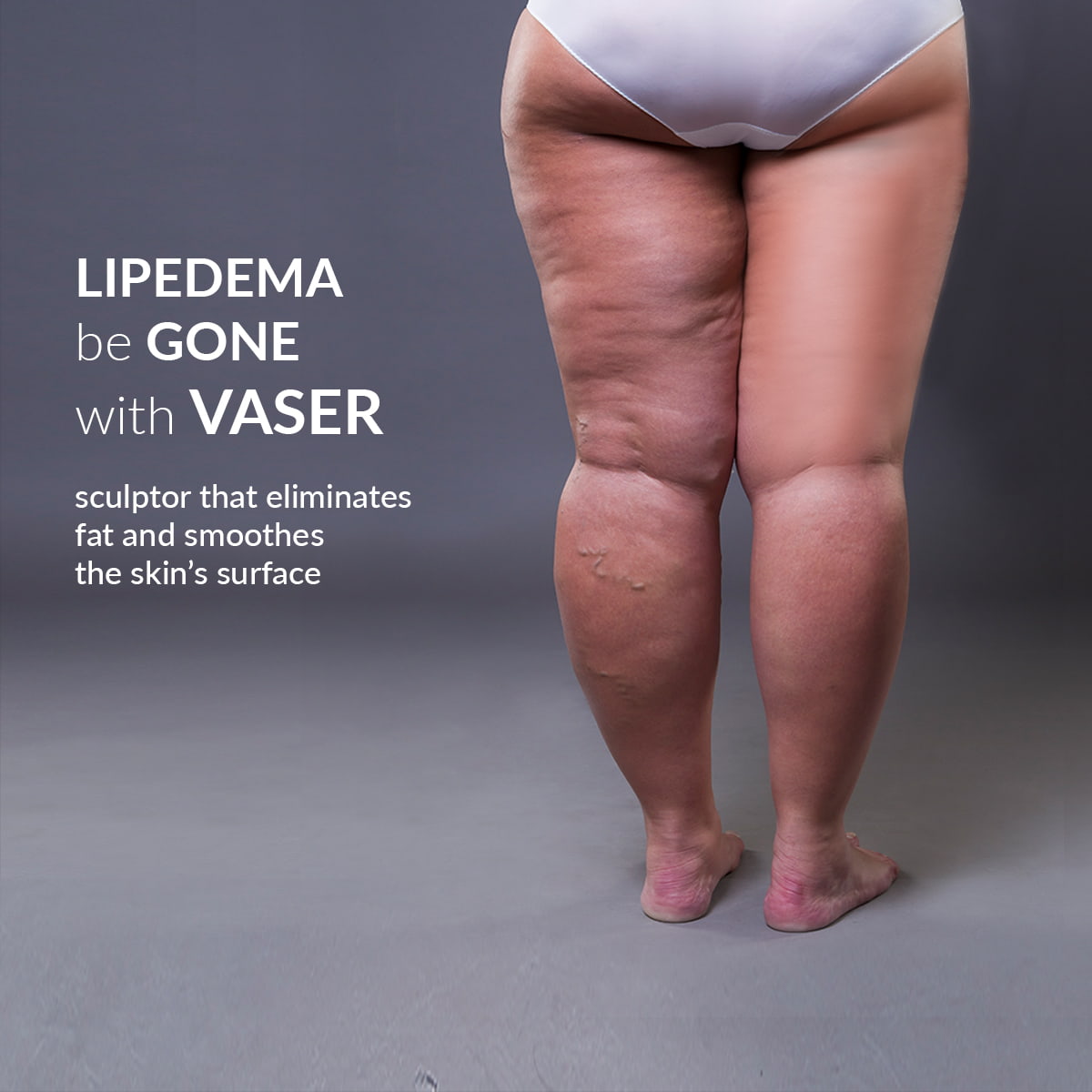
Causes of Lipedema
The cause of lipedema is not known, but it is suspected that female hormones have a role in its developement. That’s because the condition affects mostly women, and it often begins or worsens at puberty, during pregnancy, following gynecologic surgery, and around the time of menopause. Furthermore it is also believed that genes are involved, because many women with the condition have family members suffering with lipedema as well.
Stages of Lipedema
-
Stage 1: even skin surface with an enlarged hypodermis
-
Stage 2: uneven skin pattern with the development of a nodular or mass-like appearance of subcutaneous fat, lipomas, and/or angiolipomas
-
Stage 3: large growths of nodular fat causing severe contour deformity of the thighs and around the knee, and
-
Stage 4: presence of lipolymphedema
Types of Lipedema
-
Type 1: Buttocks and hips
-
Type 2: Buttocks to knees with folds around the knee
-
Type 3: Buttocks to ankles
-
Type 4: Arms
-
Type 5: Isolated to lower leg
Lipedema Treatments
A treatment called complete decongestive therapy can ease painful symptoms. Complete decongestive therapy involves:
Manual lymphatic drainage
A form of massage that uses gentle, rhythmic pumping movements to stimulate the flow of lymph around blocked areas to healthy vessels, where it can drain into the venous system. This helps relieve pain and prevent fibrosis.
Compression
The use of stretch bandages or custom-fitted panty hose, panties, or spandex shorts to increase tissue pressure in the swollen legs and lessen the odds of fluid building up again.
Exercise
Helps to reduce fluid buildup, boost mobility, and maintain or improve how well your legs work.
Liposuction
It has been shown that removal of the problematic fat cells helps in reducing the symptoms and preventing the building up of more lipedema. Lipedema is considered to be treatable in a large degree specially with Vaser Liposuction that does not harm other tissues in the process and its considered a gentle way to remove those fat cells. However according to the degree of the problem and the stage of Lipedema for each patient some sessions might be needed in order to achieve an acceptable improvement.
Lipedema Check list
Many patients worry that they might suffer from lipedema. Since there are not solid tests to identify whether someone is suffering from Lipedema or not the following check list of symptoms can be used to help.
-
Weight is gained disproportionately on hips, thighs and below knee (usually bilateral - affects both sides - and symmetrical - occurs evenly)
-
Larger bottom half and smaller waist
-
The feeling of fatty ‘nodules’ underneath the skin
-
Bruising occurs easily and is often unexplained
-
Legs are very sensitive to the touch
-
Deep throbbing/achy pain in legs
-
Pain in knee joints
-
Legs feel heavy and swell throughout the day (especially after long periods of standing or sitting) but resolve overnight
-
Fat on legs is soft and looks dimpled like “orange peel skin“, legs may feel cold to the touch
-
Lipedema fat does not respond to dieting
-
Hands and feet are not affected
-
Skin of affected areas may be pale and cold
-
Upper arms may also be disproportionately fatter
-
Increased swelling in hot weather
Cosmetic Vs Reconstructive
One of the greatest difficulties with treatment of lipedema is insurance coverage for the surgical treatment. Unfortunately, the combination of misconceptions about obesity and lipedema, along with the use of a code for suction lipectomy, which is often employed for cosmetic indications, has resulted in almost universal insurance denials. Hopefully, with increased awareness about this common disease, and also a greater understanding for the reconstructive nature of suction lipectomy techniques employed for removing lipedema subcutaneous adipose tissue, the women who suffer from lipedema will be able to receive treatment without the personal financial burden that currently exists.
Find out the right Lipedema treatment
Contact Dr. Angelos Karatzias to schedule your consultation
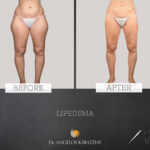
972024
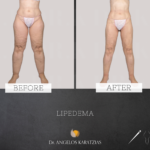
✅STORY
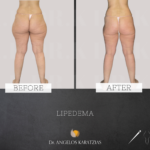
DR. KARATZIAS BEFORE & AFTER (6)
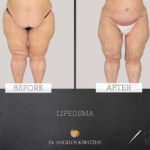
DR. KARATZIAS BEFORE & AFTER (4)
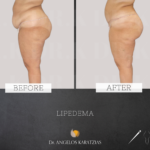
DR. KARATZIAS BEFORE & AFTER (3)


